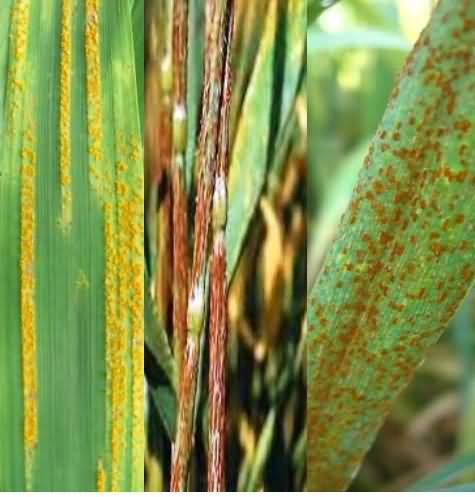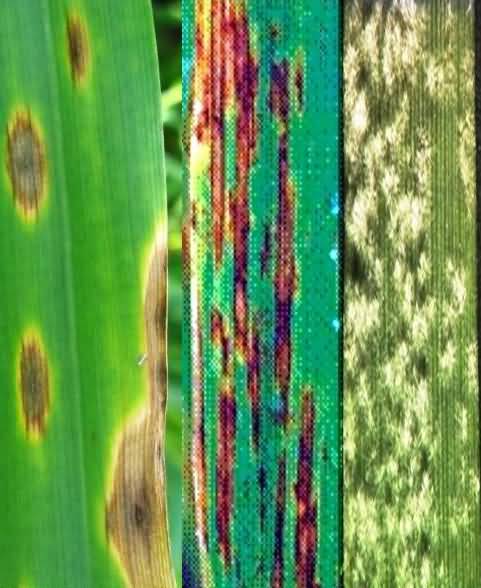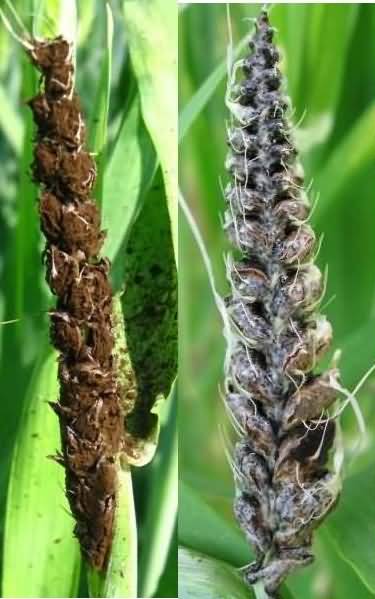Barley is the fourth largest cereal in the world after maize, rice and wheat with a share of 5.5-6% of the global cereal production.
Barley is grown nearly by 100 countries worldwide and during 2013, globally the area under the crop was nearly 49.14 million hectares with a production of 143.95 million metric tonnes (faostat3.fao.org ).
As per third advance estimates of Department of Agriculture and Cooperation, India will produce 1.63 million metric tonnes of barley during 2014-15 (eands.dacnet.nic.in).
Like other cereals, barley is also exposed to various diseases, which are ultimately responsible for significant yield reduction and poor grain quality. These diseases are wide spread from high input production conditions i.e. north western plain zone (NWPZ) to medium/ low input agro-ecologies of north eastern plain zone (NEPZ) and central zone (CZ).
The chemical controls for diseases are available, however, inbuilt resistance mechanism is eco-friendly and best tactics for sustainable agriculture coupled with high benefit ratio. The pathogens may be disseminated through seed, soil and air.
The seed borne pathogens can be controlled using seed treating chemicals. Barley is exposed to several biotic stresses, however, some major diseases are discussed below-
 1. Yellow rust: Puccinia striiformis hordei (stripe rust)-
1. Yellow rust: Puccinia striiformis hordei (stripe rust)-
Yellow rust is the disease of cool temperature (10 –20oC) and the availability of free moisture is further congenial to spread infection.
The narrow stripes containing yellow to orange yellow colour pustules on leaf sheaths, necks and glumes appears in the stripe rust.
2. Leaf rust (brown rust) Puccinia hordei :-
In case of leaf rust, the symptom appears randomly on upper surface of leaf and leaf sheaths and occasionally on neck and awns as small orange/ orange brown pustules, primarily. The temperature requirement is between 20-25oC.
3. Stem rust (black rust) Puccinia graminis :-
It requires warmer temperature for infection and dark reddish brown pustules on both sides of leaves, stems and on spikes are generally appeared.
 4. Leaf blight/ Spot blotch Bipolaris sorokiniana:
4. Leaf blight/ Spot blotch Bipolaris sorokiniana:
Leaf blight in barley is caused by Bipolaris sorokinina. The disease spreads as small light brown spindle spots distributed on leaf blade increasing in size along the leaf veins. The spots are irregular and vary from oval to oblong or elliptical.
Fully developed lesions become dark brown colour and cover entire leaf by merging together.
5. Net Blotch: Drechslera teres
In general, net blotch is not prevalent as leaf blight but is an emerging disease in north eastern plains zone.
It appears as small circular brown spots that develop into a chocolate brown net-like pattern on leaves, leaf sheaths and glumes with yellowing of the areas surrounding the net pattern.
At initial stages it is having elongated lesions parallel to each other, which fuse together at later stages.
6. Powdery mildew: Erysiphe graminis . f. sp. hordei
Disease appears sporadically and prevalent in northern hills zone. The disease is favoured by cool, cloudy and humid weather conditions.
The symptoms appear as small white grey dots on leaf surface and change to grey or greyish brown at later stages. In case of susceptible varieties, the spots coalesce and form large necrotic blotches and in severe cases the leaves dry prematurely.
The entire inflorescence gets turned to smutted head containing black powdery masses. The disease is caused by the internally seed borne pathogen and expresses only at the time of flowering. The losses in infected spikes are hundred per cent.
8. Covered Smut: Ustilago hordei
Masses of dark brown smut spores replace the entire head of plants and spores are contained in a membrane until plant maturity. When spores are dislodged by threshing they infect the seed. The hard spore balls of covered smut are very common in soils of untreated plots harvest.
Diseases Management:
- The newly released high yielding cultivars coupled with in-built disease resistance are the best option and should be used by farmers as per recommendations of sowing time and agro-ecology.
- Seed treatment with Vitavax / Thiram Power @ 2-3g/ kg or Tebuconazole 1g/ kg of seed at time of sowing.
- Foliar sprays of Propiconazole (25 EC) @ 0.1% (200 ml in 200 litres of water/acre) at the appearance of rusts and foliar blights and later at 15 days intervals till physiological maturity, if needed.
- Crop rotation with non-host crops and removal of crop debris is also helpful in combating from the barley diseases.
Authors:
Vishnu Kumar, R Selvakumar, AS Kharub and Indu Sharma
ICAR-Indian Institute of Wheat & Barley Research, Karnal-132001
Email:

